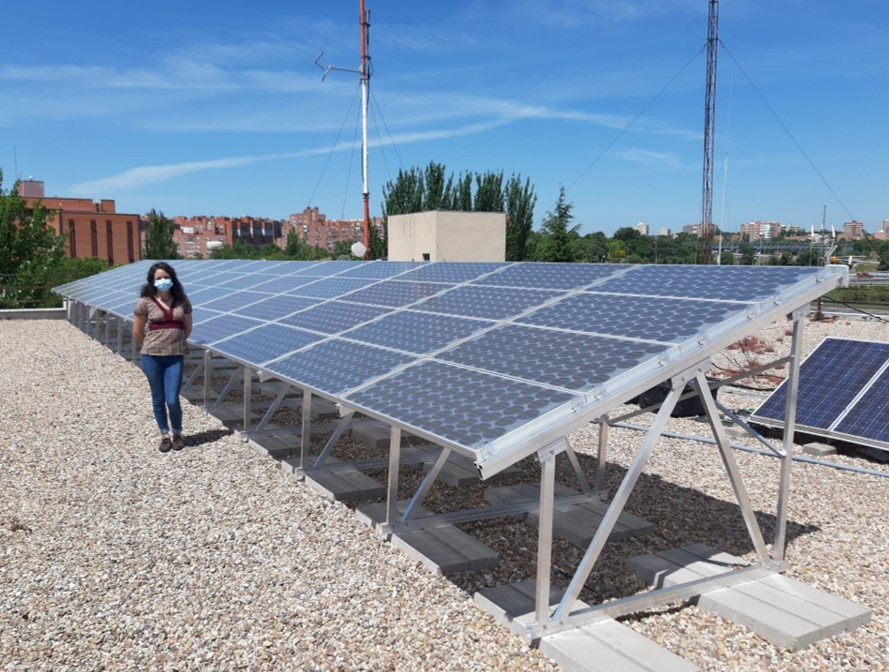The oldest bifacial PV generator, “ANTECESSOR”, operates at UPM
With a frontal power of 3.75 kW, the “Antecessor” generator, made up of 56 bifacial modules manufactured in 1987, has been operating at the IES-UPM since May, injecting energy into the electrical network of the South Campus of the UPM.
 |
|
The market share of bifacial PV modules is rapidly growing, as a result of the consolidation of PERC technology and monocrystalline silicon, which started in the late 2010s. In fact, the combination of bifacial modules with horizontal axis solar trackers has led to the cheapest electricity ever. The first industrial production ever of bifacial PV modules started in 1984 at a Spanish company called ISOFOTON, whose name was derived precisely from the bifacial illumination characterizing its modules. The company was a “spin-off” from the Instituto de Energía Solar of the Universidad Politécnica de Madrid (IES-UPM), where the bifacial technology was developed as a result of previous research activities focusing on PV concentration. This early bifacial PV production ended in 1989. In early 2021, the IES-UPM recovered 64 bifacial modules fabricated in 1987 that were in operation in different rural electrification systems. Many of these modules have been exposed to sunlight for more than 20 years. All the modules have been cleaned and tested. 56 of them have been installed on a fixed structure at the IES-UPM premises and have been injecting electricity to the grid from May 5th, 2021.These modules are therefore the oldest bifacial photovoltaic generator in operation in the world, which inspired its name: “Antecessor”. Its frontal power is 3.75 kW. The modules are made with round monocrystalline Si solar cells with 10 cm diameter and glass-EVA-transparent back sheet encapsulation. The modules were delivered 34 years ago with a nominal bifacial power of 90 W, measured under a front illumination of 1000 W/m2 and a simultaneous rear illumination of 500 W/m2. Because the power bifacial coefficient was about 70%, that means a nominal power of the frontal side of 67 W. Despite their long exposure to sunlight, they appear to be in good condition. The only visual defect is some browning, and more than 90% of the modules retain a frontal STC power of more than 59 W (90% of the rated value). That allows for good energy performance: In the first week of operation at the IES-UPM site, the “Antecessor” injected 142.5 kWh into the grid, for a front irradiation of 42.4 kWh/m2 and a rear irradiation lower than 3.4 kWh/m2, operating on a gravel ground with a 22% albedo. The corresponding PR, referred to the frontal side, was 0.9. Solar Jiennense has played a key role in the recovery of these modules. |


